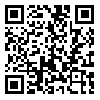Volume 13, Issue 5 (7-2014)
ijdld 2014, 13(5): 375-382 |
Back to browse issues page
Download citation:
BibTeX | RIS | EndNote | Medlars | ProCite | Reference Manager | RefWorks
Send citation to:



BibTeX | RIS | EndNote | Medlars | ProCite | Reference Manager | RefWorks
Send citation to:
Khajouee E, Elahi-Moghaddam Z, Behnam-Rasouli M, Mahdavi-Shahri N. COMPARATIVE STUDY OF THE EFFECTS OF TYPE I AND TYPE II DIABETES ON BIOCHEMICAL FACTOR SLEVELS & HISTOLOGICAL CHANGES IN THYROID GLAND IN MALE WISTAR RATS. ijdld 2014; 13 (5) :375-382
URL: http://ijdld.tums.ac.ir/article-1-5249-en.html
URL: http://ijdld.tums.ac.ir/article-1-5249-en.html
1- Department of Biology, Facultyof Science,Islamic Azad University ofMashhad
2- Department of Biology, Faculty of Science, Ferdowsi University of Mashhad. ,Behnam@um.ac.ir
3- Department of Biology, Faculty of Science, Ferdowsi University of Mashhad.
2- Department of Biology, Faculty of Science, Ferdowsi University of Mashhad. ,
3- Department of Biology, Faculty of Science, Ferdowsi University of Mashhad.
Abstract: (6768 Views)
Background: Diabetes is a kind of metabolic disorder characterized by hyperglycemia, caused by defect in insulin function, secretion or both. In chronic hyperglycemia different tissues and organs, such as thyroid gland underwent histophysiological alterations. The aim of the present study was to compare the effects of type 1 and type 2diabetes on the serum levels of biochemical factors and histological changes in the thyroid gland in male Wistar rats.
Methods: After induction of type 1 diabetes (Alloxan 135 mg/kg BW) and type 2diabetes (10% fructose administrated through drinking water for 8 weeks) all rats were kept for 2 months. Blood samples were collected at the beginning and in the middle and at the end of experiment for biochemical factors analysis. After that, the thyroid gland of all rats were removed and processed for histological preparation. Then the HE stained sections were examined for thyroid gland volume and follicular surface density measurements, using Cavalieri’s Principle and stereological method, respectively.
Results:The results showed an increase in surface density and a decrease in thyroid volume in type 1 diabetic and type 2 diabetic groups, when compared with control. Furthermore, in type 1 diabetic group, the Triglycerid and Cholesterol levels increased and LDL level decreased, while in type 2 diabetic group, LDL and HDL levels slightly decreased. These results reveal that type 1 and type 2 diabetic conditions probably cause hypo- and hyper activity of thyroid gland, respectively.
Type of Study: Research |
Subject:
General
Received: 2014/11/1 | Accepted: 2014/11/1 | Published: 2014/11/1
Received: 2014/11/1 | Accepted: 2014/11/1 | Published: 2014/11/1
Send email to the article author
| Rights and permissions | |
 |
This work is licensed under a Creative Commons Attribution-NonCommercial 4.0 International License. |





